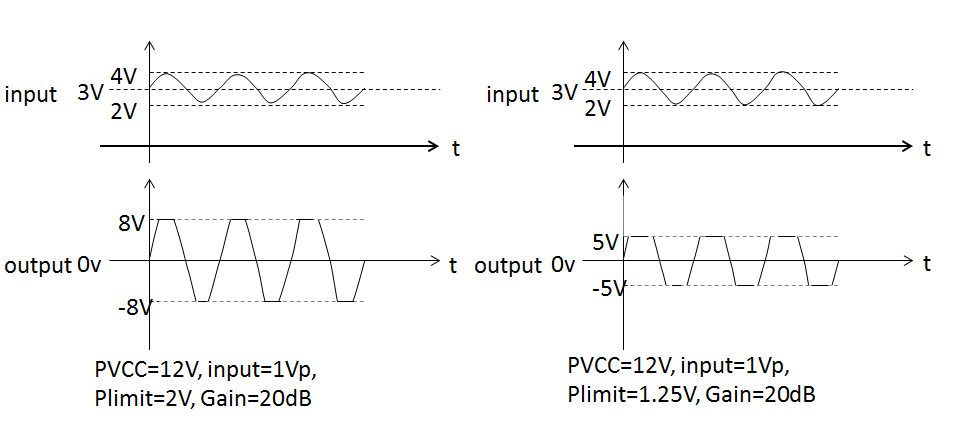Other Parts Discussed in Thread: TPA3128D2,
Page 16 in TPA3116 datasheet, the table 3 shows the power limit example. I have three questions about that:
1. how to understand: Vp = 4 x PLIMIT voltage if PLIMIT < 4 x Vp ?
2. I think that PLIMIT voltage = GVDD*(R to GND)/ (R to GND + R to GVDD), is that correct? if this is right, when PVcc = 24V, PLIMIT= GVDD, I think the R to GND is Open, and R to GVDD is short, but the table shows the opposite, why?
3. Can you give me the formula of calculating the output voltage? I can't understand how it works. Thanks!


